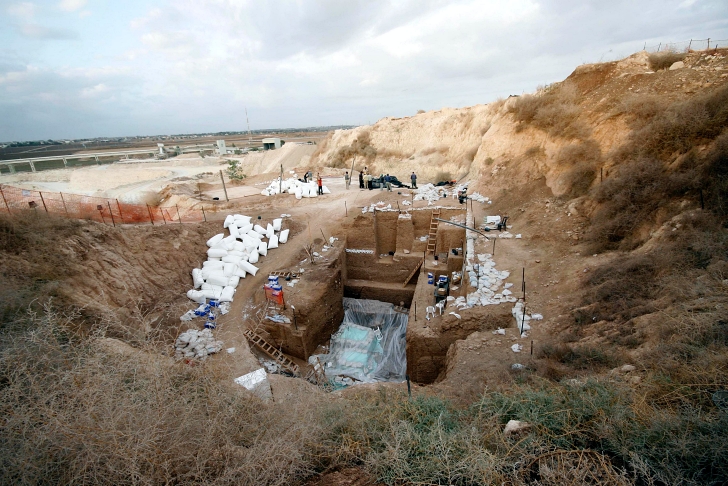Hominin Fossil Shows Both Human and Neanderthal Characteristics
The fossils shed new light on human origins.
A series of head and jaw bone fossils found in Israel have recently undergone computer 3D modeling and show signs of both Neanderthal and human characteristics. The fossils date to around 120,000-years-ago which places them among the other known hominin species in the Levant at the time. The discovery and subsequent research is turning what we know about human origins on its head. 2 papers were recently published in the journal, Science, with experts in the fields of medical forensics, archaeology, and human origins contributing to understanding more about how this person lived.

Researchers found the fossils at the Nesher Ramla site, a mining area near the Israeli city of Ramla. The first archaeological discoveries were made after a mining staff came upon what looked like ancient human activity. Archaeologists had to dig down 8 meters (26 feet) to find the remains of an ancient hominin encampment.
The fossils that were found included mandible and cranial hominin bones. The cranial bones showed similarities with Homo sapiens, while the jaw showed similarities with Neanderthal (like almost no chin and very large teeth). This suggests that the person in question would have been mixed-species.
Researchers used human computer 3D morphometrics to compare data points on how our skulls are composed and then compared these to the fossils found at the site. Since the remains date to the Middle Pleistocene period, the specimen so far has been referred to as the MP Homo as it still remains unclear how many early species this person was descended from.
The bones of one of the early humans who walked the earth between 120,000 and 140,000 years ago have been found buried in an Israeli quarry.https://t.co/nohYkusTnC
— DW News (@dwnews) June 24, 2021
However, researchers have not referred to this specimen as a new species since they have so far been unable to obtain DNA from the fossils and so they cannot be tested for relationships to other hominin DNA samples.
Excavations at the site found showed much ancient human activity. Evidence of horse and deer bones were found on site, as well as indicators of advanced tool usage, cooking, and maintaining a fire were all found on site. According to the authors the “MP Homo mastered stone-tool production technologies, previously known only among H. sapiens and Neanderthals…These findings constitute evidence of contacts and interactions between H. sapiens and MP Homo.”
#NesherRamla Homo: New #fossil discovery from Israel points to complicated evolutionary process @binghamtonu @sciencemagazine https://t.co/VxEmXke0o9
— Phys.org (@physorg_com) June 24, 2021
Not only do these findings shed light on the potential inter-species mating that took place in the ancient world, but it also changes how we conceptualize the evolution of humans.
One of the researchers is Binghamton University professor, Rolf Quam, who said that, “The oldest fossils that show Neandertal features are found in Western Europe, so researchers generally believe the Neandertals originated there. However, migrations of different species from the Middle East into Europe may have provided genetic contributions to the Neandertal gene pool during the course of their evolution.”
You can see the jaw fossil in 3D in the video below.
SKM: below-content placeholderWhizzco for DOT

